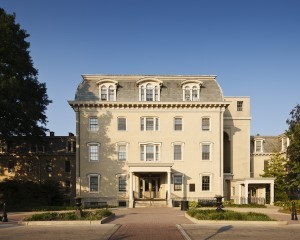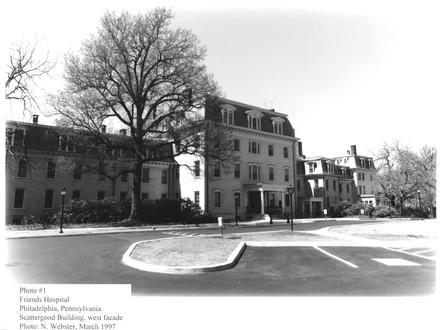Friends Hospital
Introduction
Text-to-speech Audio
Images
Friends Hospital

Friends Hospital- Original Building

Backstory and Context
Text-to-speech Audio
Friends Hospital, also known as the Friends Asylum for the Relief of Persons Deprived of the Use of Their Reason or Friends Asylum for the Insane, was established in 1813. The purpose of the hospital was to provide quality and professional health care to mentally ill patients. At this time, most mentally ill patients were treated in municipal almshouses, private hospitals, or family homes. Although almshouses treated large volumes of patients, these patients received inadequate treatment in unsanitary, poorly equipped, and under staffed facilities. Private hospitals, with typically 30 to 40 beds, treated small numbers of patients, but were too expensive for the poor. To offset these deficiencies in health care, many religious groups founded hospitals. Many of these private sectarian hospitals treated only those deemed as “hard-working and worthy poor” and refused treatment for paupers who were better suited for the almshouses.
The Society of Friends of Philadelphia, Pennsylvania, were the first religious organization in the United States to establish an institution specifically for the treatment of mentally ill patients. The Pennsylvania Hospital opened in 1752, but utilized the common practices of shackling, separation, and deprivation for patients. In May 1817 the Quakers founded Friends Hospital as a mental treatment facility that focused on humane and quality treatment of the mentally ill. Friends Hospital became the model for nineteenth and early twentieth century facilities. It was also one of the first hospitals in the United States to employ both male and female medical professionals.
Friends Hospital focused on mental health rather than mental treatment. Through utilizing the Quaker principle of moral treatment, Friends practitioners aimed to treat all patients with respect, equality, and love to promote total health. Patients were treated through interactive groups, with twelve to twenty patients in each group. These groups completed chores and attended lectures and tea parties together to enhance socialization. Patients were able to intermingle and only those who were a threat to themselves or others were restrained.
The hospital was a self-sustaining campus with a church, a women’s school, a men’s school, art studios, gardens, gymnasium, and libraries. Friends Hospital was instrumental in changes in mental health treatment and institutions. With its promotion of acceptance of psychiatric illnesses, Friends Hospital continues today as an influential institution for mental health and treatment.
